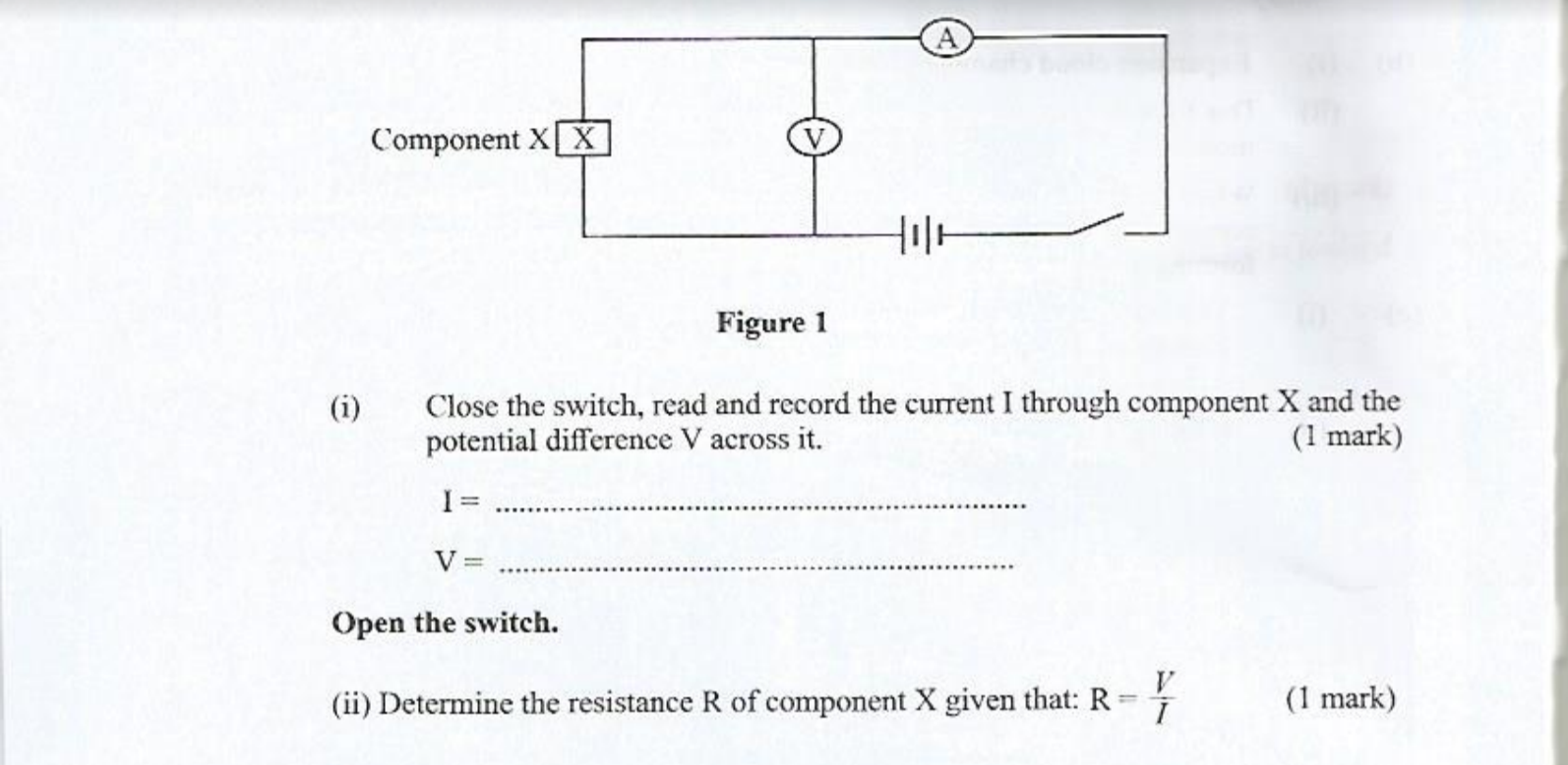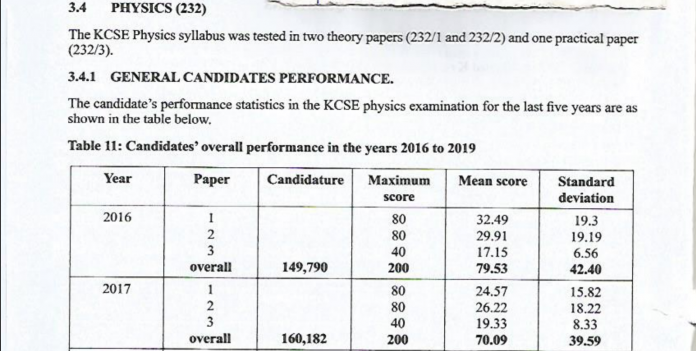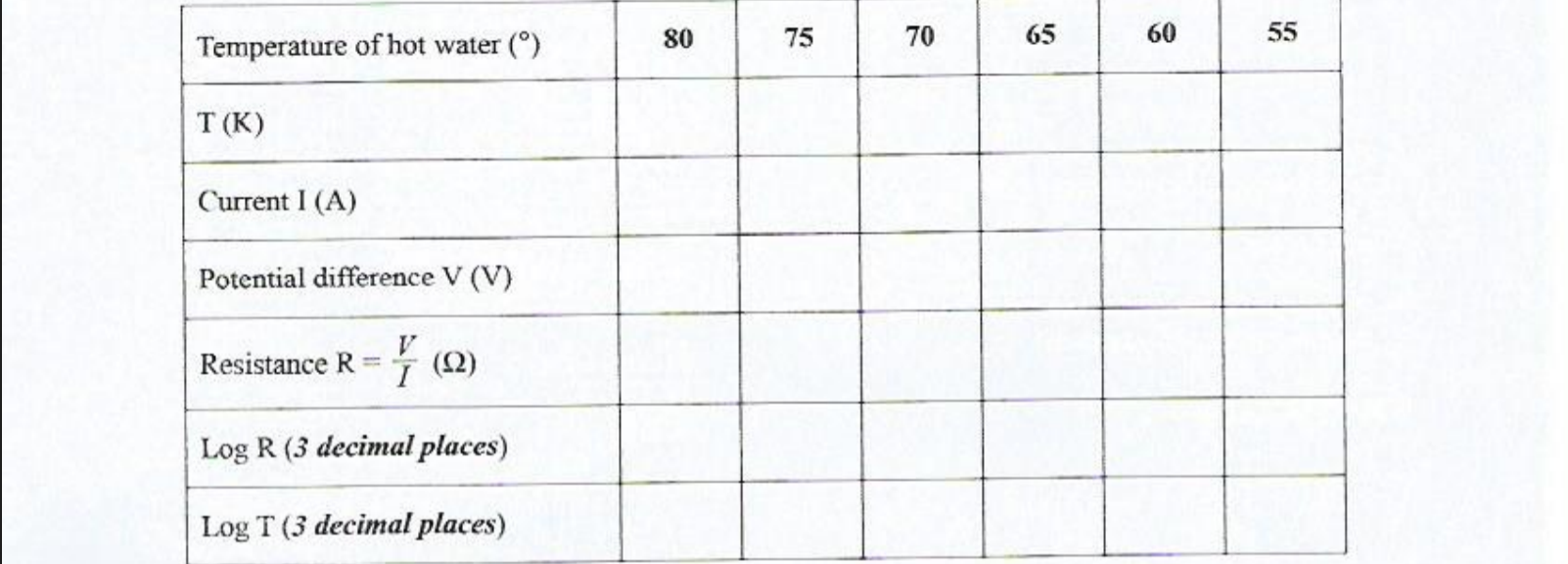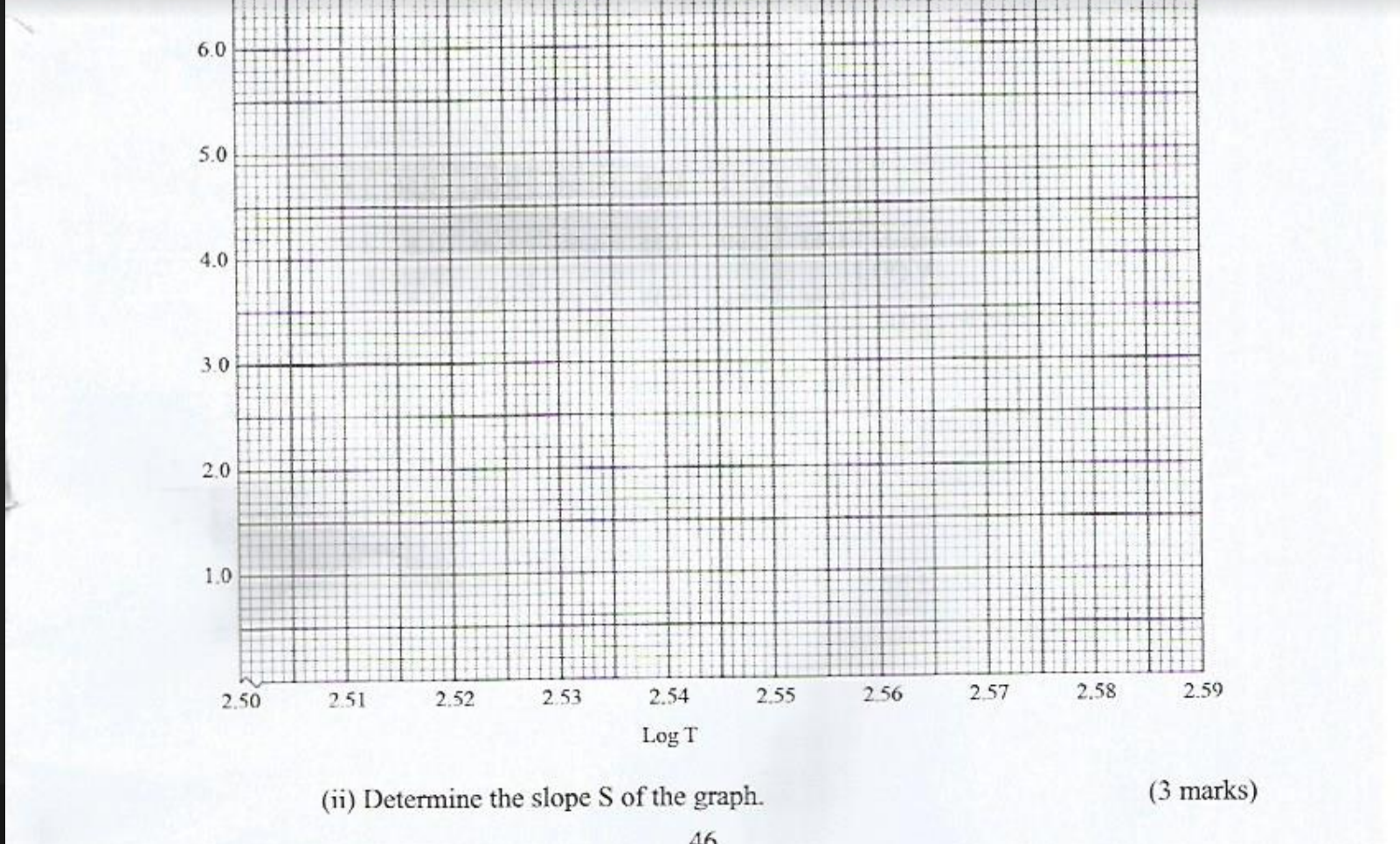The KCSE Physics syllabus was tested in two theory papers (232/1 and 232/2) and one practical paper (232/3).
GENERAL CANDIDATES PERFORMANCE.
The candidate‘s performance statistics in the KCSE physics examination for the last five years are as shown in the table below.

From the table it can be observed that:
The candidature increased to 184,559 in 2019 from 172,676 in 2018. This was an increase of 11,883 candidates (6.88 %); this is low compared to the overall increase in candidature.
There was a slight improvement in the performance of paper 1 from a mean of 22.98 in the year 2018 to 25.63 in the year 2019 while Paper 2 and 3 registered a drop in the performance.
The standard deviation in all the Physics papers is near normal. This shows proper discrimination between the high and low achievers.
The overall performance of physics dropped from a mean of 68.54 in 2018 to 65.18 in 2019.
An analysis of the student‘s responses revealed that there is still lack of knowledge on comparative words that show the differences in the physical characteristics or behavior of materials. Application of the knowledge in the new tasks is challenging most candidates.
The following is a discussion of some of the questions in which candidates performed poorly.
Physics Paper 1 (232/1)
Question 1
A micrometer screw gauge has a 0.03 mm error. State the reading that is observed on the instrument when used to measure the diameter of a wire whose actual diameter is 0.38 mm. (1 mark)
Candidates were expected to determine the error and establish the meter reading the actual measurement.
Weakness
Candidates were quick to add the zero error without realizing that in the task what was required was the meter reading and not the actual measure.
Expected response Actual reading = 0.38mm (error) = 0.03 Meter reading = 0.35mm
Question 7
A student carrying a heavy box using the right hand is observed to lean towards the left hand side. Explain this observation. (2 marks)
Candidates were expected to explain why one leans on the opposite direction when carrying a load in one hand.
Weakness
Many candidates were not able to relate the leaning in opposite direction to the balancing the shift of the position of the Center of gravity.
Expected response
The box shifts the position of the center of gravity of the system towards the right hand maintain equilibrium. The student leans in the opposite direction.
Question 13
Two boxes E and F of masses 2.0 kg and 4.0 kg respectively are dragged along a frictionless surface using identical forces. State with a reason which box moves with a higher velocity: (2 marks)
Candidates were required to compute the force applied using the relation F=ma.
Weakness
Some candidates failed to identify the formula Fema from the information provided.
Expected response
E (201) F=Ma, the smaller the mass, the higher the acceleration
Question 15
(a) Figure 6 shows a bottle top opener being used to open a bottle.
Indicate on the diagram the direction of the load and the effort. (2 marks)
(b) State two ways in which an inclined plane can be made to reduce the applied effort when pulling a load along the plane. (2 marks)
(c) A block and tackle system has three pulleys in the upper fixed block and two pulleys in the lower movable block.
(i) Draw a diagram to show how the system can be set up in order to lift a load and indicate the position of the load and effort. (3 marks)
(ii) State the velocity ratio of the set up. (1 mark)
Candidates were required to identify the effort on a bottle opener, state ways of reducing friction on an inclined plane, drawing the pulley system and evaluating the efficiency of the pulley system.
Weakness
Some candidates mixed the responses on the inclined plane as if still the bottle opener. The drawing of the pulley system was such that the number of strings direction of the effort were not well mastered.
Expected response
 (b) Reducing the angle of inclination. Reducing the friction – using rollers, lubricants etc.
(b) Reducing the angle of inclination. Reducing the friction – using rollers, lubricants etc.
(ii) V.R. = No, of strings supporting the load.
= 5
From the graph, determine the values of n and c given that P=nT + c where n and c are constants. (4 marks)
(b) Explain why it is not possible to obtain zero pressure of a gas in real life situation. (2 marks)
(c) A fixed mass of a gas occupies 1.5 3 1023 m3 at a pressure of 760 mmHg and a temperature of 273 K. Determine the volume the gas will occupy at a temperature of 290 pressure of 720 mmHg. (3 marks)
(d) State any three assumptions made in kinetic theory of gases. (3 marks)
Candidates were required to carry out a graphical analysis of a provided graph to evaluate the slope and intercept using the relation y = mx +c, state why a real gas cannot have zero pressure, evaluate volume from the pressure law and state the assumptions of the kinetic theory of gases
Weakness
Many candidates lacked the graphical analysis of the graph to obtain the slope and intercept accurately.
Expected response
(a) From y=mx+c, (P=nT+C) – m is the slope of the graph
(d) Assumptions of the kinetic theory of gases: –
Attraction of between the molecules is negligible. ✓
Volume of the molecule is negligible compared to the volume of the container occupied by the gas. ✓
The molecules undergo elastic collisions. ✓ –
The length of time of a collision is negligible compared to the time between collisions.✓ (Any three)
Physics Paper 2 (232/2)
Question 1
Figure 1 shows two plane mirrors inclined at an angle of 120° to each other. A ray of light makes an angle of 40° with the first mirror. 
Candidates were required to draw rays to show reflection of various mirror surfaces.
Weakness
Many students were unable show the angles of incidence and reflection, most were drawing lines instead of rays.
Expected response
Question 9
Figure below shows the input and output signals on a CRO screen when two diodes are used during a full wave rectification.
Explain how the two diodes rectify the input signal. (3 marks)
Candidates were required to explain the application of diodes for rectification.
Weakness
Many students confused lack ways of expressing what they mean. The direction of flow of current in each half cycle not well outlined.
Expected response
During the first half cycle of the input signal, current flows in the first diode, During the second half cycle of the input signal, current flows in the second diode, When the currents through the two diodes are combined a fully rectified wave signal is obtained as the output signal.
Question 13
State the disadvantage of using a convex mirror as a driving mirror: (1 mark) Candidates were required to state the disadvantages of convex mirrors for use as driving mirrors.
Weakness
Some candidates confused between image and object, talking of object instead of the image formed.
Expected response
Shows the object as being further than it actually is. Shows diminished images.
Question 18
(a) Describe how a magnet can be demagnetised using the electrical method. (2 marks)
You are provided with two iron bars P and Q. One of the bars is magnetised while the other is not. Explain how the magnetised bar can be identified without using a magnet or magnetic material. (2 marks)
(c) Figure below shows two identical copper coils X and Y placed close to each other: Coil X is connected to a DC power supply while coil Y is connected to a galvanometer.
(i)Explain what is observed on the galvanometer when the switch is closed. (4 marks)
(ii)State what is observed on the galvanometer when the switch is opened. (1 mark)
(iii)State what would be observed if the number of turns in coil Y is doubled. (1 mark)
Candidates were required to display knowledge on magnetism, properties of magnets and explain the process of mutual induction.
Weakness
Most candidates failed to use key words such as solenoids, alternating current etc. failed to understand the task by talking of iron filings. Many candidates failed to talk of repition as a way of testing for magnetism.
Expected response
(a) Place the bar magnet inside a solenoid placed in an East, West direction alternating current through the solenoid then pass an
(b) Repeatedly suspend each of the bars through its centre of gravity and set it swinging in a horizontal plane about a vertical axis through its centre. The magnetized bar will always come to rest in a north–south direction.
(c) (i) The galvanometer pointer first deflects then moves back when the switch is closed a current builds up in coil X and due to change in flux linkage an emf is induced in coil Y making an induced current flow through the galvanometer during the time current in coil X is rising. When current through coil X is steady no induced current flows through the galvanometer since there is no change in flux linkage.
Therefore pointer deflects back.
(ii) Pointer deflects in the opposite direction
(iii) Magnitude of deflection increases.
Question 19
(a) Define half life as used in radioactivity. (1 mark)
(b) Figure below shows a device used to detect radioactivity by forming tracks when air is ionised.
(i) State the name of the device shown. (1 mark)
(ii) State how air in the device gets ionised. (1 mark)
(iii) Describe how tracks are formed. (3 marks)
c (i) State two factors that determine the speed of the photoelectrons emitted from a metal surface. (2 marks)
(ii) The energy of a photon of light is 2.21 eV. (electronic charge is 1.6 x 10–19C and planks constant h is 6.63 x 70–34Js).
I. Express this energy in joules. (1 mark)
II. Determine the frequency of the light that produces the photon. (2 marks)
Candidates were required to define radio activity, explain the detection of radiations and show understanding of photoelectric effect.
Weakness
Most candidates failed to use the key words in radio activity, were unable to distinguish between types of cloud chambers and lacked knowledge on most concepts in the topic.
Expected response
(a) Half–life is the time taken for half the number if nuclides initially present in a sample to decay.
(b) (i) Expansion cloud chamber/cloud chamber.
Due to collisions between the radiations from the radiation source and the air molecules. When the piston is pulled down air expands hence cools The ions form nuclei for condensation upon cooling on which the saturated alcohol vapour condenses forming visible tracks.
(c) (i) – The work function of the metal. ✓
– Energy of incident radiation/frequency/wavelength.
Physics Paper 3 (232/3)
In this practical paper many candidates displayed knowledge of the apparatus and mastery of experimental procedure. The accuracy of the apparatus used continues to be a challenge for many candidates. Interpretation of results in the correct significant figures need to be emphasized.
However, from the responses that were analyzed the following practical tasks were poorly performed.
Question 1
You are provided with the following:
– A stirrer – A stand, a boss and a clamp – A thermometer – An ammeter A voltmeter – A beaker – A source of boiling water – Two dry cells in a cell holder – A switch – Seven connecting wires – A component labelled X
Proceed as follows:
(a) Set up the circuit as shown in figure 1.
 (b) Pour hot water into the beaker and set up the apparatus as in figure below, so that component X and the thermometer bulb are fully immersed.
(b) Pour hot water into the beaker and set up the apparatus as in figure below, so that component X and the thermometer bulb are fully immersed.
(c) Stir the water from time to time, when the temperature falls to 80o, switch on the circuit, read and record the current I and the potential difference V in table 1. Then open the Switch.
(d) Repeat (c) as the temperature falls to the other values shown in table 1. Complete the table below (8 marks)
On the axis provided, plot a graph of Log R against log T. (4 marks)
(ii) Determine the slope S of the graph. (3 marks)
(f) Given that R and T are related by the equation Log R=Log K1 nLog T, determine the value of;
(i) n (1 mark)
(ii) K (2 marks)
Candidates were required to assemble apparatus, take measurements accurately and manipulate the data to the required number of decimal places.
Weaknesses
Many candidates indicated wrong readings from the measuring instruments, failed to work with the correct significant figures and units.
Expected response
ADVICE TO TEACHERS.
- There should be emphasis on use of key words in given concepts.
- Candidates should be advised to follow the procedure during practical examinations and use their results appropriately.
- Candidates ought to be advised on the need to use comparative words appropriately.
- Practical lessons must be carried out as is required in the syllabus to have learners master the concepts.
- Logical analysis of concepts and critical thinking must be encouraged during the teaching/ learning process.
- The candidates should learn to utilize the information provided.
















